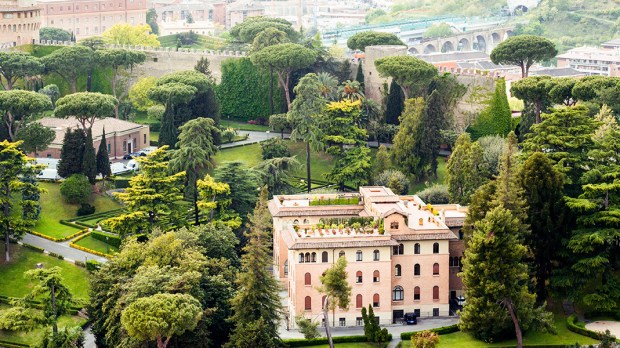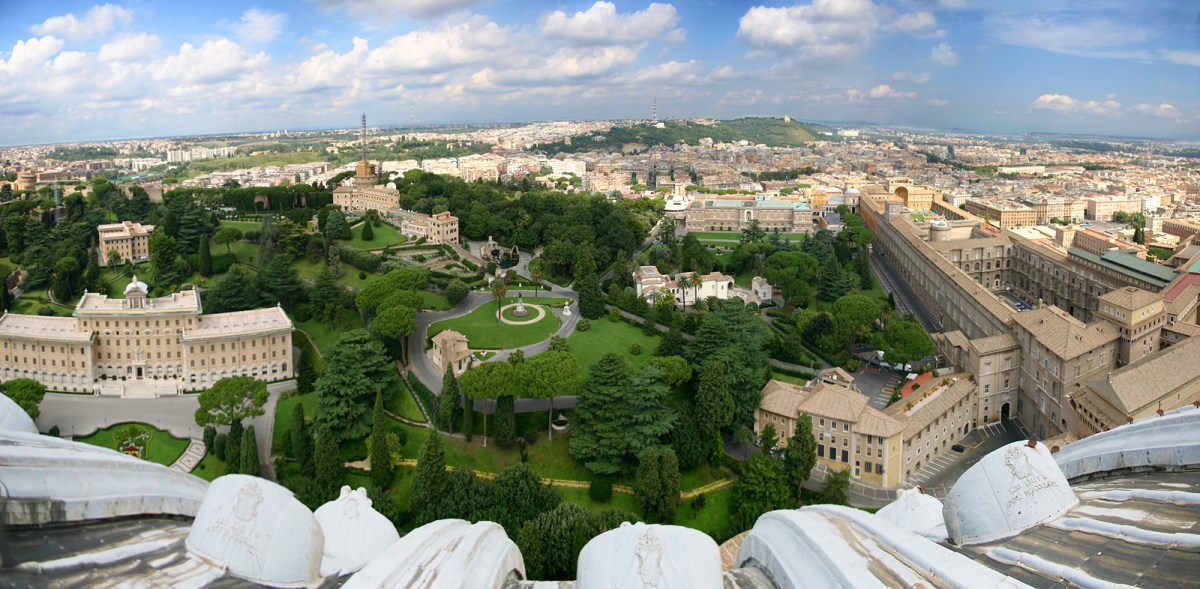Visitors to the Vatican typically flock to St. Peter’s Basilica or to the 500-year-old collections found at the Vatican Museums. But not many people may know that right behind St. Peter’s lies a beautiful green area spanning 57 acres, where trees, flowers and works of art blend in a deeply harmonious way.
According to a tradition, the Gardens were created out of sacred soil carried by St. Helena after she visited Mount Calvary in the Holy Land. By joining soil of Mount Calvary with that of Rome, St. Helena enacted the symbolic union between the blood of Christ and the blood of the thousands of early Christian who died because of persecutions during the reign of Emperor Nero Caesar Augustus.
During medieval times the gardens were extended by will of Pope Nicholas III (1277–1280), who moved the papal residence to the Vatican from the Lateran Palace, where it had been previously located. Nicholas III ordered that the Vatican be enclosed within gated walls and that an orchard and a walkable garden be planted behind St. Peter’s Basilica.
The current design was mostly completed during the Renaissance, when Italian architect Donato Bramante came up with a landscape plan for the Vatican Gardens. Bramante’s plan was split into three different courtyards: the Belvedere courtyard, the Library courtyard and the Pinecone courtyard. It also featured a garden labyrinth made of boxwood and framed with pine and cedar trees.
In 1927 Pope Pius XI designated St. Therese of Lisieux as the official patroness of the gardens and ordered that a small shrine be erected in her honor inside the gardens. It is now part of a collection of outdoor shrines, including an artificial grotto dedicated to Our Lady of Lourdes and Our Lady of Guadalupe.
Spring and fall are probably the best times to visit the gardens. That’s when the usual green of the pine and cedar trees is complemented by the bright colors of blossoming flowers or with different shades of yellow and red of autumn leaves.
It takes approximately two hours to tour the Vatican gardens by foot, but bus visits can also be arranged. Visitors can only access these stunning gardens as part of guided tours. Tickets start at 24 Euro and can be booked online here.
Visits can be arranged every day except for Wednesdays, when there is papal audience.


